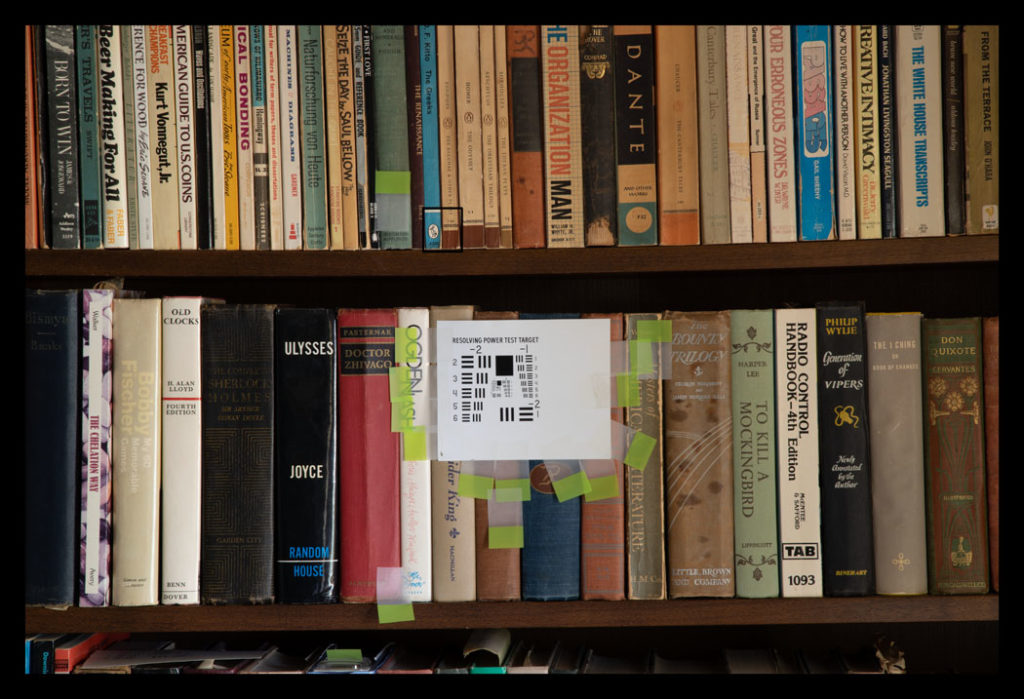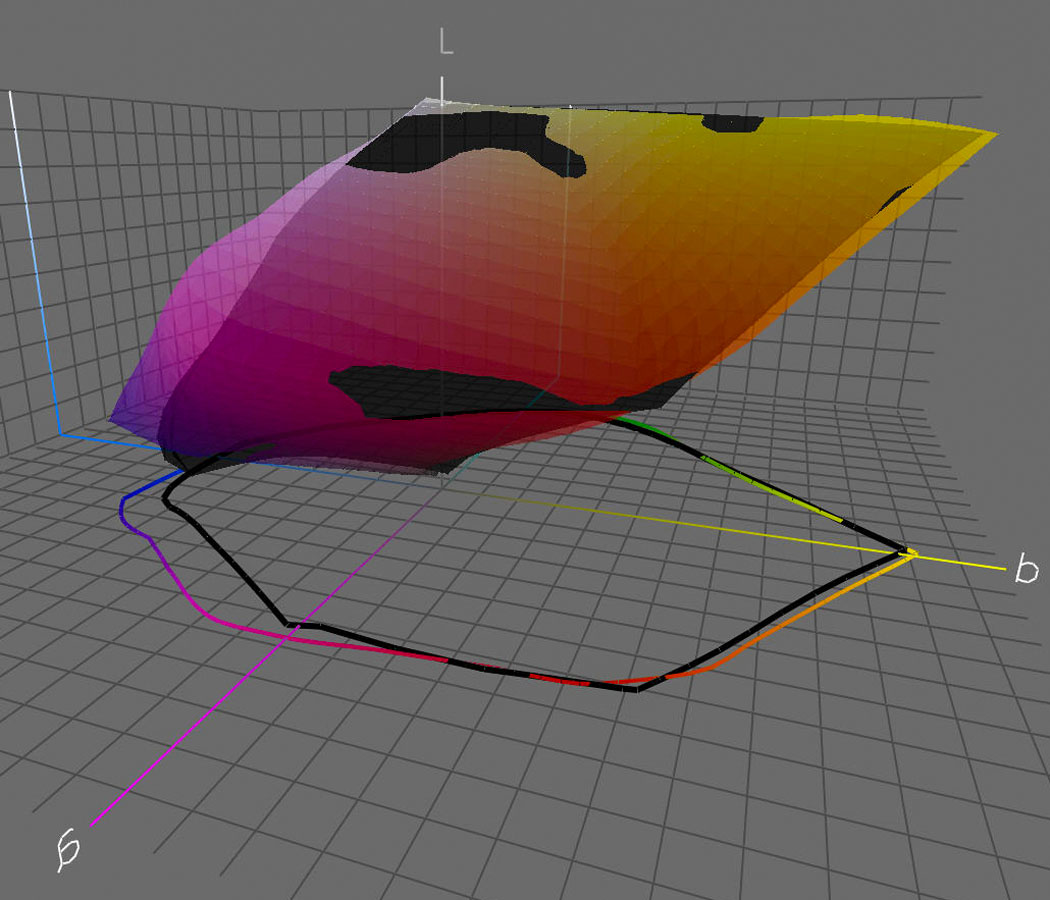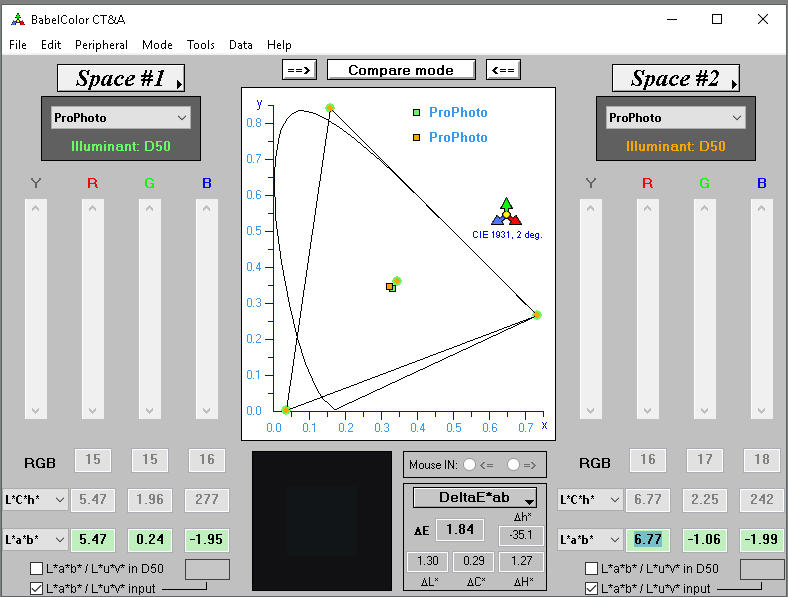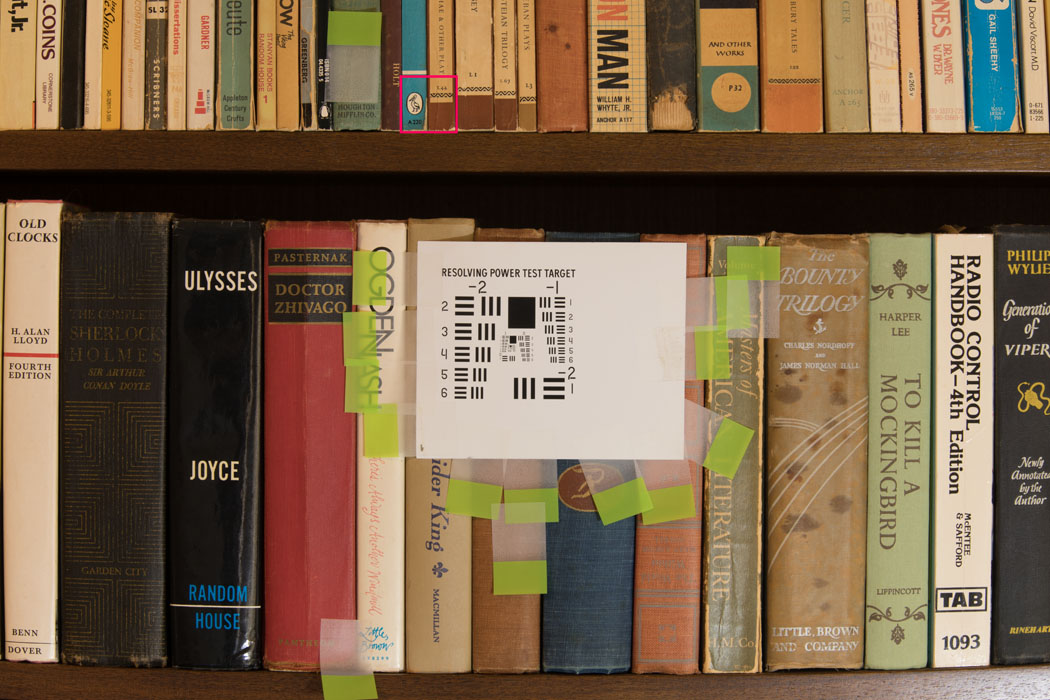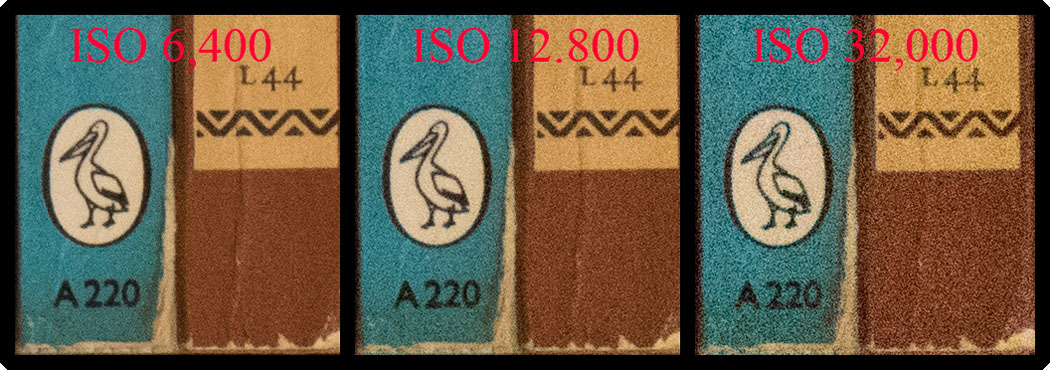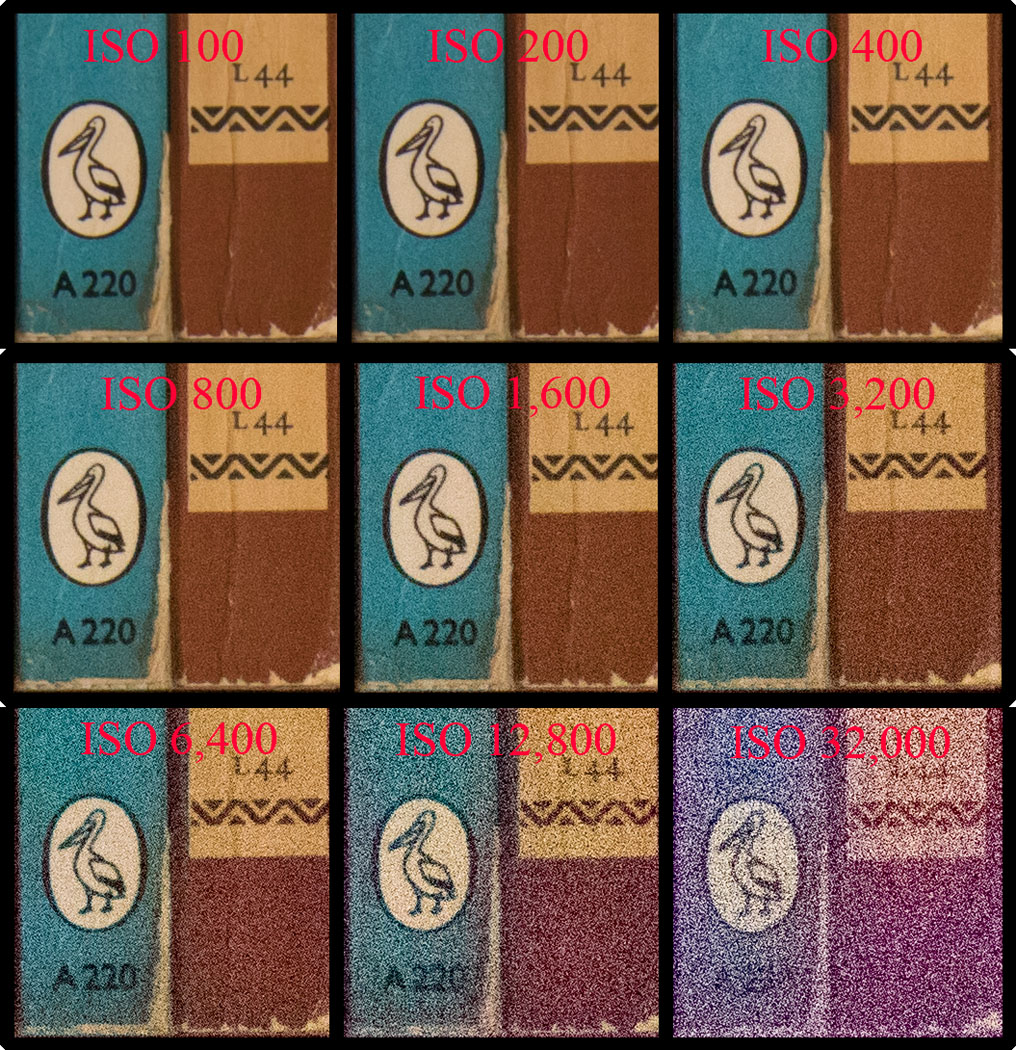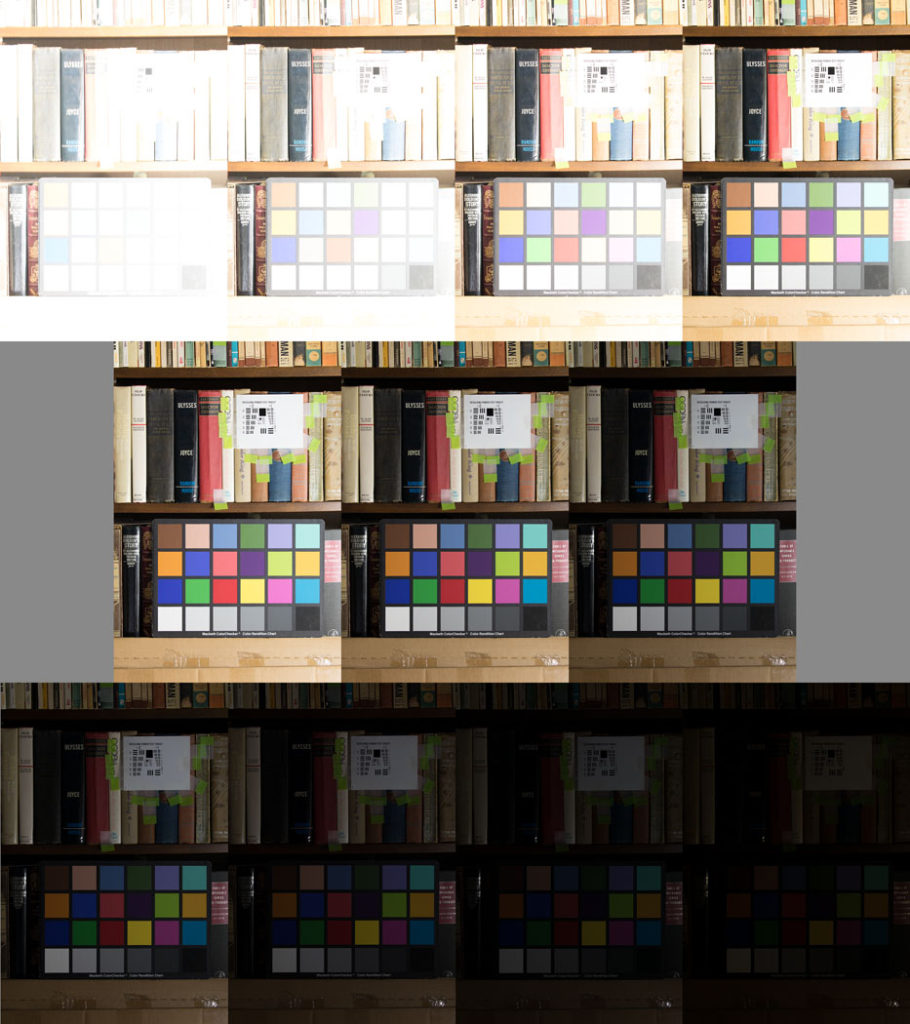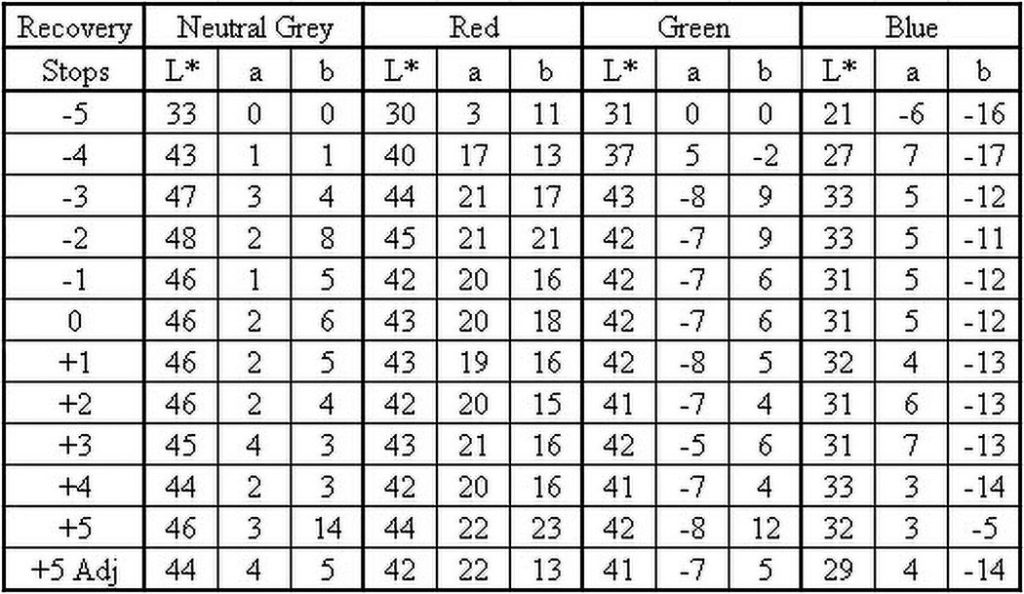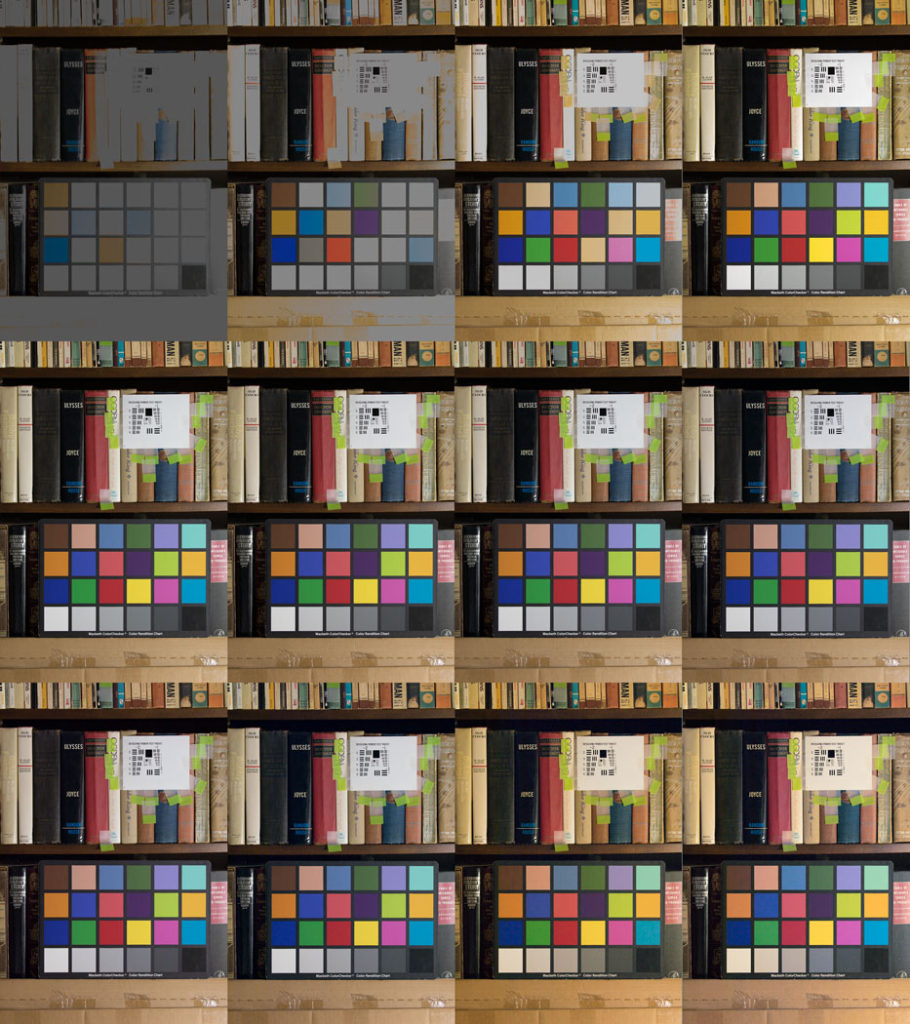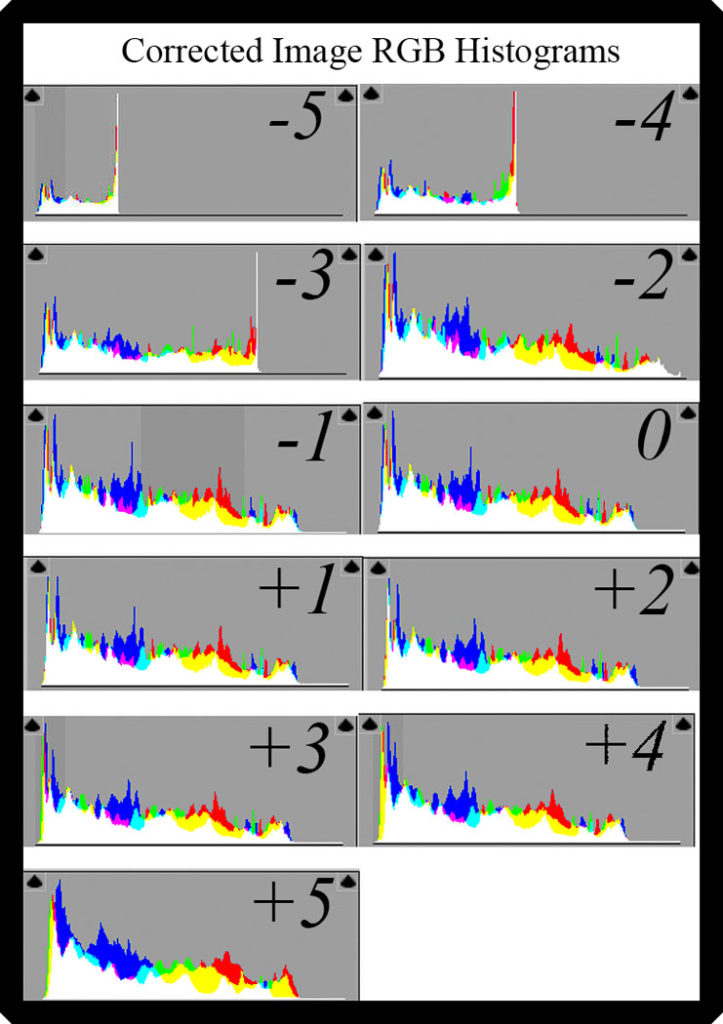When Reikan Technology’s FoCal application was recently updated to provide support for the Canon EOS R, it opened up a whole new avenue to test lenses for aperture sharpness. Since the EOS R is mirrorless, and its focusing pixels are embedded in the imaging sensor, it does not require a micro-focus adjustment. Now both Canon EF and RF lenses can be tested for center resolution on the same camera for meaningful comparison without the deleterious influence of micro-focus adjustment inaccuracy.
Accordingly, I tested 11 different Canon lenses that were introduced at various times from 1989 through 2018. To accomplish this, the FoCal test target was photographed at a constant distance of 12 feet, illuminated by a constant ancillary light source. The lenses were all attached to the EOS R camera mounted on a Really Right Stuff BH55 ball head mounted on a Gitzo GT3541XLS carbon fiber tripod. The aperture sharpness application stepped each lens’s aperture in 1/3 stop increments over its entire range, as well as adjusting the shutter speed to keep the exposure constant while also tripping the shutter. When this was finished, the software measured the resolution of each image and assembled the results into a report.
The resolution measurements at maximum aperture, optimal aperture, F8, F11, F-16, and F-22 were extracted from the lens reports. These were assembled into focal length groups for comparison, making it easier to see which of the lens tested at a given aperture would better fulfill quality needs:

With the exception of the EF 20-35mm F2 .8 lens at 20 mm, most lenses tested here made prior to 2009 required being stopped down several stops in order to reach their optimum resolution aperture. Since then, we see that more current design lenses are sharp wide open, or at most one stop down. Unfortunately, however, this does not apply to the EF 100 – 400 mm F4 .5-5.6 L IS II lens at tested focal length settings beyond 100 mm. But, interestingly enough, this zoom lens at 300 mm was sharper across the aperture range than the older fix focal length 300 mm F4 IS USM lens. Of all the lenses tested the EF 24-70 mm F2.8L II USM was the sharpest among the lens tested both wide open and at F-22 and at both focal length extremes. The table below shows all the aperture sharpness test results by lens grouping for easier comparisons that way:

Unfortunately, the FoCal aperture sharpness test only measures the center sharpness of a lens. I have contacted Reikan Technology and requested that they also provide a test chart and the means to measure lens edge aperture sharpness. They have indicated that they would consider it, but so far nothing has happened. That said, it is worth noting that the edge sharpness of the Canon RF 24-105 mm F4 IS USM is visually superior to other lenses I have looked at briefly using the USAF – 1951 test targets. This is a confirmation of the RF lens series edge sharpness superiority reported elsewhere.
All this said, when it comes to visually evaluating reasonable size prints made with any of these lenses, it would be difficult to tell the difference for most subjects, even with a side-by-side comparison. However, when you start to take into consideration things like cropping, larger prints made therefrom could suffer. So play it safe and choose higher sharpness lenses were possible. Since setting the desired aperture doesn’t always result in the optimum exposure when photographing a given subject, check out how much under or overexposure recovery is possible here.

